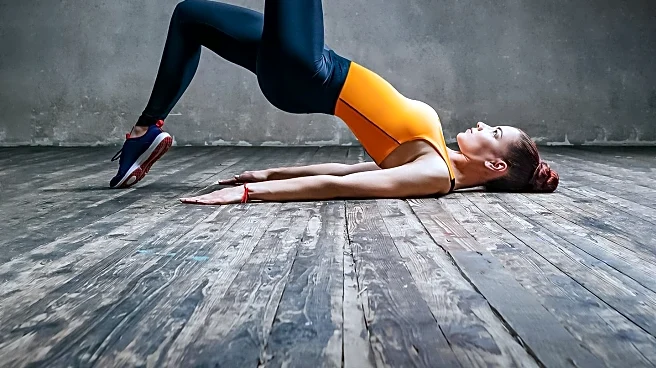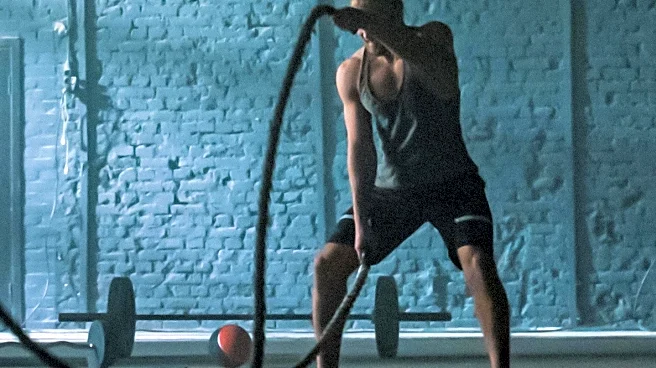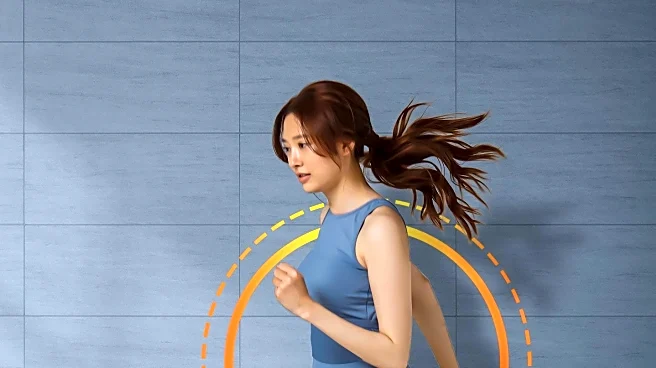What's Happening?
A new fitness trend called 'quadrobics' is gaining traction, where participants engage in movements on all fours, mimicking animal-like motions such as bear crawls and cat leaps. This unconventional exercise style is popular on social media, with enthusiasts often donning animal masks and tails. The practice is linked to the therian community, individuals who identify as nonhuman animals, although it is not exclusive to them. Quadrobics is described as a full-body workout that significantly enhances physical fitness, with practitioners reporting weight loss and muscle definition. The trend is part of a broader movement towards primal and quadrupedal movement training, which emphasizes natural human movement patterns.
Why It's Important?
The rise of quadrobics reflects a growing interest in functional and holistic fitness practices that diverge from traditional gym workouts. This trend highlights a shift towards more playful and accessible forms of exercise that do not require specialized equipment or facilities. It offers a comprehensive workout that engages multiple muscle groups, improves mobility, and enhances cardiovascular health. The trend also underscores a cultural movement towards embracing alternative identities and lifestyles, as seen in its connection to the therian community. This could influence the fitness industry to incorporate more diverse and inclusive workout options.
What's Next?
As quadrobics continues to gain popularity, it may lead to the development of structured training programs and classes. Fitness professionals might begin to integrate elements of quadrobics into existing workout routines to cater to the growing demand for innovative exercise methods. Additionally, the trend could inspire further exploration of primal movement practices, potentially leading to new fitness subcultures. The fitness community may also see increased collaboration with social media influencers who are driving the trend's visibility and acceptance.
Beyond the Headlines
The quadrobics trend raises interesting questions about identity and self-expression in fitness. It challenges conventional norms by encouraging participants to explore movement in a way that connects them to their primal instincts. This could lead to broader discussions about the role of identity in physical fitness and how exercise can be a form of personal expression. The trend also highlights the potential for fitness to be a meditative and spiritual practice, offering mental health benefits alongside physical ones.











